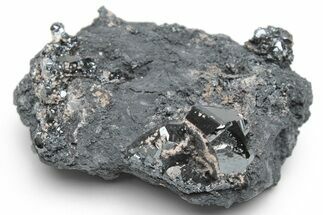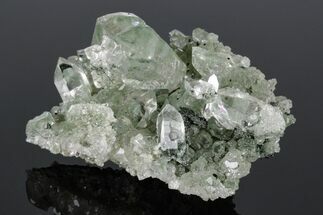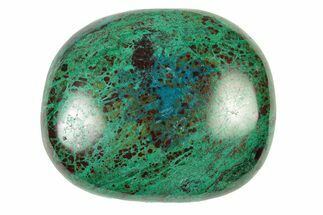This Specimen has been sold.
2.3" Quartz and Calcite Crystal Association - Mexico
This specimen contains an association of quartz crystals and sharp calcite crystals, collected from Mexico. One half of the specimen looks to have been blasted with a natural, unknown micro-crystal mineralization.
About Quartz
Quartz is the name given to silicon dioxide (SiO2) and is the second most abundant mineral in the Earth's crust. Quartz crystals generally grow in silica-rich environments--usually igneous rocks or hydrothermal environments like geothermal waters--at temperatures between 100°C and 450°C, and usually under very high pressure. In either case, crystals will precipitate as temperatures cool, just as ice gradually forms when water freezes. Quartz veins are formed when open fissures are filled with hot water during the closing stages of mountain formation: these veins can be hundreds of millions of years old.
Quartz is the name given to silicon dioxide (SiO2) and is the second most abundant mineral in the Earth's crust. Quartz crystals generally grow in silica-rich environments--usually igneous rocks or hydrothermal environments like geothermal waters--at temperatures between 100°C and 450°C, and usually under very high pressure. In either case, crystals will precipitate as temperatures cool, just as ice gradually forms when water freezes. Quartz veins are formed when open fissures are filled with hot water during the closing stages of mountain formation: these veins can be hundreds of millions of years old.
Hematite is a fairly common mineral, typically responsible for the red-brown colorations found in other minerals and rocks. Its chemical composition is Fe2O3, occasionally containing small amounts of titanium (variable formula (Fe,Ti)2O3). Much of the time, non-crystalline hematite specimens are the result of a transformation from limonite following loss of water.
 Reviews
Reviews














